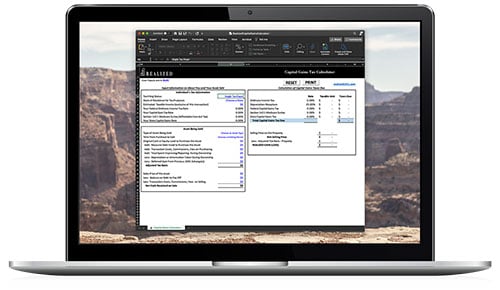
Capital losses can help offset other income. This might be income from capital gains or even ordinary income. However, there are certain restrictions to these income offsets. The net capital gain or loss must be calculated as a first step. If the net is a loss, does that require reporting? Is it not like you will be taxed on a loss, right? The answer is more complex than it may first seem.
Capital Gains and Losses
A capital loss is incurred when there is an overall loss due to the sale of a capital asset. The net of all capital asset transactions is important in determining the overall gain or loss.
Common capital sale transactions include stocks, bonds, primary residence, and investment property.
Using an example, let’s say an investor sells shares in a stock at a $5,000 loss. Then two other stock sales generate a $7,000 gain. The net transaction is a $2,000 capital gain.
In another example, a different investor sells shares in two stocks for a loss of $5,000. Then the investor sells shares in a third stock for a $1,000 gain. The investor has a net capital loss of $4,000.
In both scenarios, does the investor need to report these capital transactions?
Reporting Capital Losses
Using the above examples, the first investor sold his assets after holding them for 1.5 years. This creates a long-term capital gain, which has favorable tax treatment. If the investor had held for a year or less (short-term capital gain), gains would be taxed at ordinary income tax rates.
Long-term capital gains rates are taxed as follows for 2023:
| FILING STATUS | 0% RATE | 15% RATE | 20% RATE |
| Single | Up to $44,625 | $44,626 – $492,300 | Over $492,300 |
| Married filing jointly | Up to $89,250 | $89,251 – $553,850 | Over $553,850 |
| Married filing separately | Up to $44,625 | $44,626 – $276,900 | Over $276,900 |
| Head of household | Up to $59,750 | $59,751 – $523,050 | Over $523,050 |
This table shows that long-term capital gains rates are capped at 20% for the highest earners. Everyone else still sees favorable tax treatment through a reduced tax rate.
Moving on to the second example, where the investor incurred a $4,000 loss, $3,000 of the loss per year can be used to offset ordinary income. The remaining $1,000 is a carryover loss. Meaning it carries as a loss into the next tax year, where it can offset other income.
So now the question is — do you have to report capital losses? Yes. Capital asset transactions are reported on Form 8949. It includes sections for short and long-term assets. These totals are then copied to Schedule D and ultimately to Form 1040. Both gains and losses are reported on your tax forms.
It's important to report capital losses. Otherwise, investors can't use them to offset income. Also, any capital loss over $3,000 for the year is carried over to the next year. Without reporting, you would not be able to take advantage of the income offsets provided by capital losses.
In special cases, capital asset transactions may not be reported on your income tax forms. Some include reporting to the IRS from Form 1099-B or wash sale cases. Capital assets held for personal use and sold at a loss may not need to be reported. However, this list is not exhaustive. That's why it's best to work with a tax specialist when filing your taxes.
This material is for general information and educational purposes only. Information is based on data gathered from what we believe are reliable sources. It is not guaranteed as to accuracy, does not purport to be complete and is not intended to be used as a primary basis for investment decisions. It should also not be construed as advice meeting the particular investment needs of any investor.
Realized does not provide tax or legal advice. This material is not a substitute for seeking the advice of a qualified professional for your individual situation.
Hypothetical examples shown are for illustrative purposes only.


